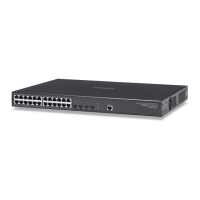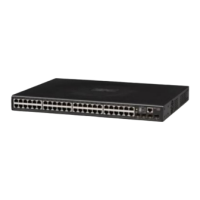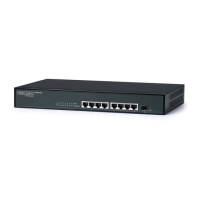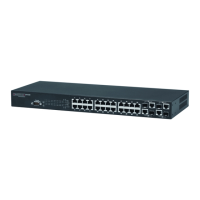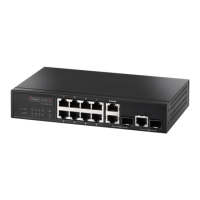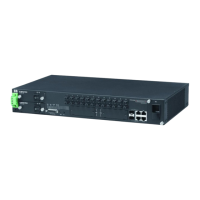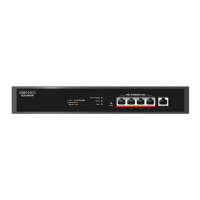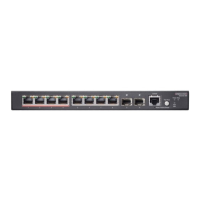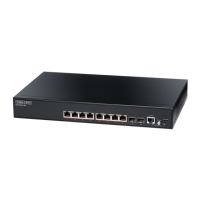C
HAPTER
2
| Initial Switch Configuration
Managing System Files
– 45 –
MANAGING SYSTEM FILES
The switch’s flash memory supports two types of system files that can be
managed by the CLI program, web interface, or SNMP. The switch’s file
system allows files to be uploaded or downloaded.
The types of files are:
◆ Configuration — This file type stores system configuration
information. Configuration files can be saved to a TFTP server for
backup, or uploaded from a TFTP server to restore previous settings
using the CLI. Configuration files can also be saved to or restored from
a management station using the web interface. See “Managing
Configuration Files” on page 190 for more information.
◆ Operation Code — System software that is executed after boot-up,
also known as run-time code. This code runs the switch operations and
provides the CLI and web management interfaces. It can be uploaded
from a TFTP server using the CLI or from a management station using
the web interface. See “Upgrading Firmware” on page 188 for more
information.
SAVING OR
RESTORING
CONFIGURATION
SETTINGS
Configuration commands modify the running configuration, and are saved
in nonvolatile storage. To save the current configuration settings to a
backup server, enter the following command, and press <Enter>.
“config save tftp-server file-name”
where “tftp-server” is the ip address of the backup server, and “file-name”
is the name under which the configuration settings are saved.
>config save 192.168.2.19 4528v.cfg
>
To restore configuration settings from a backup server, enter the following
command, and press <Enter>.
“config load tftp-server file-name”
>config load 192.168.2.19 4528v.cfg
>
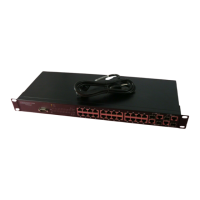
